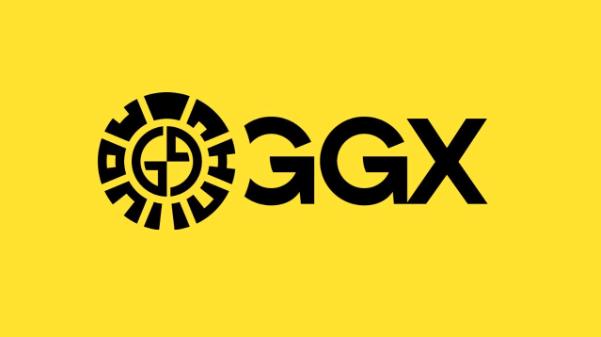Golden Gate’s (GGX): Achieving cross-chain integration through multi-party computation
Source: Golden Gate
Blockchain systems often need to perform specific operations on data while protecting sensitive information. The most common example is public-private key encryption technology, where the private key must remain confidential but is needed to initiate transactions.
Golden Gate (GGX) is an innovative cross-chain infrastructure protocol that combines public-private key encryption technology with multi-party computation, enhancing the security and integrity of transactions on the Golden Gate (GGX) protocol. It addresses the cross-chain communication and asset liquidity issues faced by Layer 1 smart contract platforms in the Web3 space. Currently, the Golden Gate (GGX) protocol is in the testnet phase.
Distributed Algorithm of Golden Gate (GGX)
The Golden Gate (GGX) protocol employs a multi-party computation mechanism for distributed secp256k1 key generation and threshold signing. This is a groundbreaking technology that fundamentally changes the process of generating secp256k1 ECDSA signatures, ensuring security. The innovative approach of Golden Gate (GGX) is based on the well-known paper "One Round Threshold ECDSA with Identifiable Abort" published by Gennaro and Goldfeder in 2020. (Paper retrieved from https://eprint.iacr.org/2020/540.pdf)
The paper by Gennaro and Goldfeder primarily discusses the application of zero-knowledge proofs in practical cryptographic scenarios and is widely recognized and respected in the industry. Golden Gate (GGX) integrates this cryptographic scheme into its protocol framework, achieving a revolutionary distributed algorithm. This algorithm can coordinate the secure execution of multi-party computation while generating secp256k1 ECDSA signatures. This breakthrough technology enables decentralized custody of the total value locked (TVL) in token bridging, providing users with comprehensive and highly trustless security guarantees.

Compared to alternative solutions like zkSNARK zero-knowledge proofs and multi-signatures, the distributed threshold signing scheme adopted by the Golden Gate (GGX) protocol has significant advantages. Multi-party computation can generate a single secp256k1 signature without the need for multiple signatures and extensive computational resources. This streamlined process allows for efficient cross-chain bridging, reducing the computational gas required to execute smart contracts on the blockchain.
Matthew Doty, Chief Architect and Chief Scientist of the Golden Gate (GGX) protocol, stated: "Golden Gate is at the forefront of blockchain innovation." Matthew Doty was one of the earliest researchers at the Ethereum Foundation in 2014. In 2015, he co-designed Ethereum's mining algorithm with Vitalik Buterin.
Doty remarked: "By adopting the groundbreaking cryptographic technology of Gennaro and Goldfeder and implementing a distributed threshold signing scheme, we can provide a comprehensive, secure, efficient, and decentralized solution. Our goal is to unify the independently operating infrastructures and protect asset liquidity in the Web3 network."
To enhance scalability, the Golden Gate (GGX) protocol acts as a relay chain connecting different parallel chains. At the same time, the Golden Gate (GGX) protocol employs a new Incentive Message Delivery Protocol (IMDP) to achieve efficient cross-chain communication. The IMDP protocol utilizes a messenger network running light clients to deliver messages and is incentivized through transaction fees paid by users. When users call the smart contracts of the Golden Gate (GGX) protocol, the IMDP protocol triggers the messenger network, and the message delivery process is illustrated in the following diagram:

Protocol-Independent Base Layer Communication
The unification of cross-chain communication and liquidity interoperability standards is crucial for the future development of decentralized systems, which is also an issue that the Golden Gate (GGX) protocol aims to address. Interoperability between different blockchains enables more complex applications, better liquidity, and improved efficiency in Web3. The multi-party computation in the Golden Gate (GGX) protocol plays a vital role in enhancing the security, privacy, and functionality of cross-chain interactions, including secure asset transfers, atomic swaps, and privacy-preserving cross-chain interactions.
In various application scenarios of the Golden Gate (GGX) protocol, the key advantage of multi-party computation is that it allows for distributed trustless operations in cross-chain functionality. Multi-party computation also enhances decentralization, security, and privacy. The multi-party computation mechanism of the Golden Gate (GGX) protocol is one of the various technological solutions used in its tech stack. This tech stack lays a solid foundation for supporting the development of ecosystems such as DeFi and cross-chain applications, with specific technological solutions including zk-precompilation, embedded hybrid virtual machines, protocol-independent communication standards, and NPoS.
About Golden Gate (GGX)
Golden Gate (GGX) is a cross-chain infrastructure that provides protocol-independent cross-chain communication and liquidity routing, featuring a complete security architecture. Golden Gate (GGX) is delivering the next generation of programmable Layer 0, equipped with embedded hybrid virtual machines and advanced DeFi orchestration capabilities, providing critical infrastructure for the emerging "blockchain internet" of Web3.0. The Golden Gate (GGX) team has previously helped build key components of the industry's first generation of fragmented infrastructure and is now fulfilling its mission to "bring seamless composability and enhanced security standards to Web3.0."










